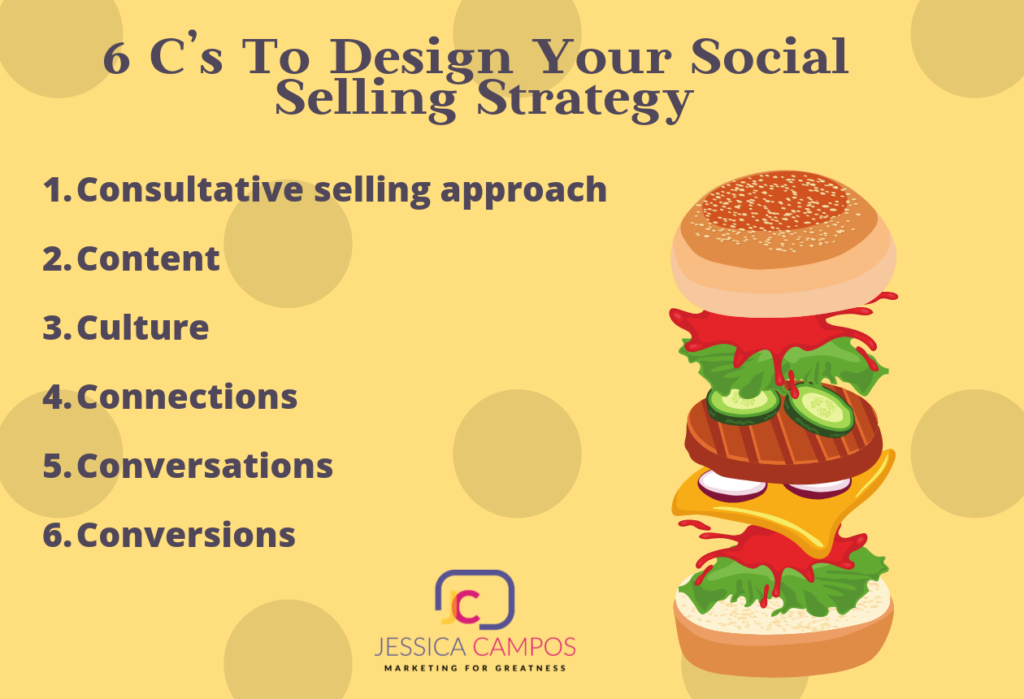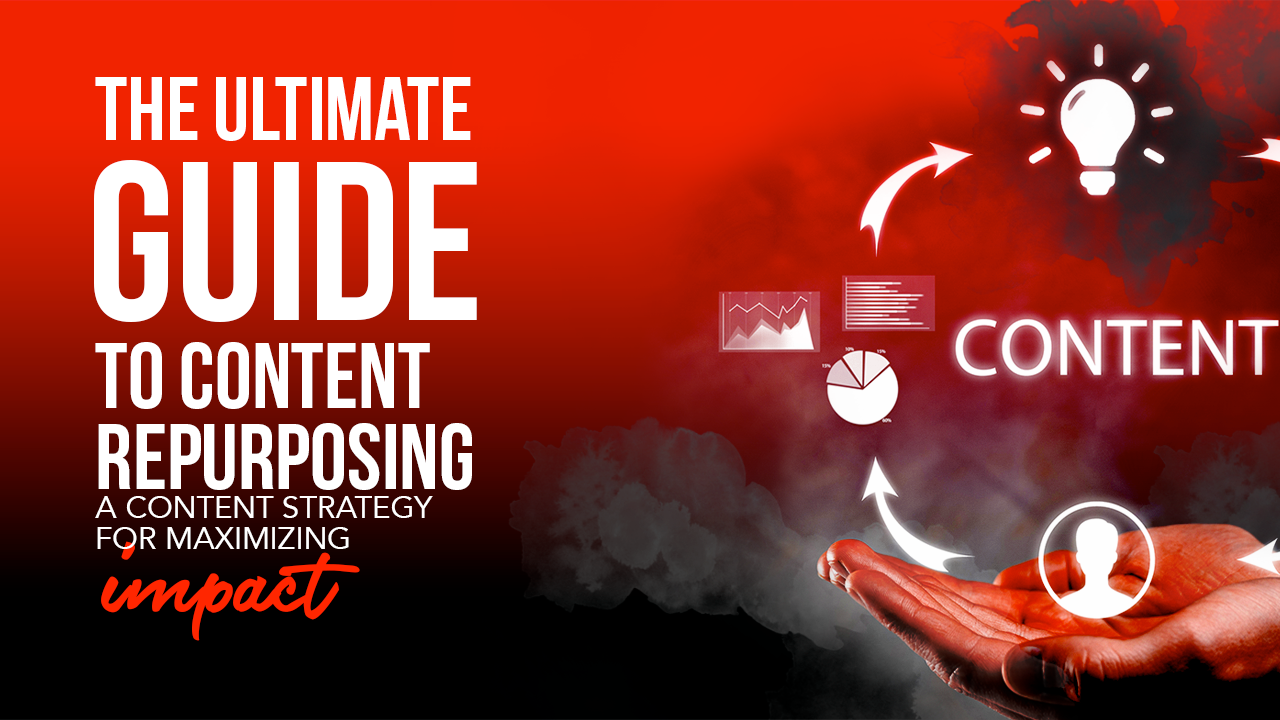Everyone wants to sell more, but not everyone seems to have the secret to more sales. Marketing is supposed to drive more sales, but, with so much information flooding our eyes, entrepreneurs struggle to distinguish the genuinely helpful marketing and sales strategies from the borderline useless.
Nobody has unlimited time and money to test every tool to determine which ones work best.
Instead of following the process of elimination, which practically seems like throwing spaghetti against the walls, and see what sticks, entrepreneurs should focus on designing and optimizing a sales process.
Simply put, stop trying the new marketing tactic on the block, and, instead, design a sales process that allows you to correlate your revenue-generating activities with your growth.
If the word sales process is making you cringe and your skin gets itchy, do not worry. I am going to debunk a sales process that will make you fall in love with sales. Pinky promise!
What Is Social Selling?
Buying and selling have always been social activities. If I ask you to think about your first sale ever, perhaps you were 7 years old or so.
Mine was in first grade and I had to knock on doors asking for donations for the Red Cross. I still remember the sound of the soda can where we had all the coins. My pitch was “Mrs. ____, would you like to cooperate with the Red Cross?”.
Actually it was a regular campaign that our school had, so, by age 11 I won the top producer award! I created a bake sale, in addition to knocking on doors and asking for a favor! I guess we can say, I was born for marketing and sales.
I’m pretty sure you have some memories too!
But what is social selling? Is it about being social and selling to people? The answer is NO. Social selling is a buzzword and there is a lot of misconception about the term.
Some people associate social selling with generating sales directly from social media channels, which is NOT accurate.
A social selling method is predicated on the fact that consumers “socialize” with others as part of their decision-making process. This means, instead of selling directly to a consumer, convincing them about their needs and featuring the benefits of your products or services, you ignite those social conversations so consumers can make their decisions.
Social selling wasn’t born because of social media.
Before our lives were lit by a thousand screens full of stories and boomerang videos, and every other glowing corner of the internet, people asked others they knew for buying advice. Social media happens to empower social selling which is why generating revenue through social media should be one of your goals.
The State of Social Selling
- 93% of sales executives have not received any formal training on social selling (source)
- 80% believe their salesforce would be more productive with greater social media presence but, 2/3 of companies have no social media strategy for their sales organization (source)
- 50.1% of social salespeople spend 5-10% of their time on social media (source)
- 53% of salespeople want help in understanding social selling better (source)
- Marketers spend an average of 4-6 hours a week on social media (source)
- 61% of US marketers use social media for lead generation (source)
Ingredients Of A Successful Social Selling Strategy
When I teach social selling on my workshops, in particular, LinkedIn Workshops, I explain my Hamburger Method. It’s a multi-ingredients formula that needs to be applied as a whole. Just like when you eat a burger (or vegan burger!). You can’t just eat cheese and say it’s a burger. Y
A social selling strategy is effective once all the ingredients are together.
6 C’s To Design Your Social Selling Strategy

1) Consultative selling approach
Let’s cover each in detail.
1) Consultative Selling Approach
Consultative selling is an approach that focuses on creating value and trust with the prospect and exploring their needs before offering a solution. The salesperson’s first objective is building a relationship; their second is providing the right product.
Don’t make the mistake that plenty of sellers make: approach people, request them as a connection, and pitch them. That’s not what relationship marketing is about.
Being consultative helps sellers accomplish two important things:
1.By maintaining their focus on building relationships and connection with the client, respecting where they are, and genuine caring about them, they create a positive buying experience for the client that fosters an ongoing relationship and trust.
Relationships = trust.
2. Because they build trust, they gain needed information to deeply understand client needs, identify the right solution, and tailor what they say about products to ensure relevance and impact.
Research shows that 62% of customers say they share bad customer experiences with others. If you want to increase your customer experience, make no mistake, social selling will help you reach your goal.
2) Content That Can Lead Decision Makers Considering Your Solution
Notice that I wrote content and not content marketing. Content marketing is also a buzzword. This puts entrepreneurs at risk of receiving wrong advice and, therefore, getting wrong results.
Your content is a derivative of your communication. Your communication gets shared via your message. A clear message is needed, before putting a content marketing plan in place. This is an ingredient that, in my opinion, many entrepreneurs miss.
Perhaps you heard that you need a blog and share information so you can get people to find you on Google. While that can be true, blogging will be considered a key factor of your social selling strategy if the content is relevant to your target audience. In particular, decision-makers.
According to the statistics collected from Kapost, website conversion rate is 6 times higher for those who’ve adopted content marketing strategy than those who haven’t & there is a whopping 75% increase in marketing qualified leads through content only.
Content is not just about writing a blog post. To activate social selling, consider sharing content that ignites social interactions. Some examples:
- Give people a story to tell.
- A fact that they didn’t know.
- Ignite hope that they can solve their biggest problem today.
- Show them how much you care about them.
Recent stats reveal that 84% of conversations about your brand happen offline. This is why I insist that you can’t measure the impact of your social media channels by your likes and shares anymore. That’s in the past.
Next time you go to an event, pay attention to how many conversations are happening and people are using their mobile devices to show something.
So, yes, social media can ignite your social selling, but it’s not the only way.
3) Culture
Culture is an unmissable ingredient of our recipe for success, especially if you are building a sales team. But what exactly is culture?
Culture is essentially a combination of the values and behaviors instilled in a company’s workplace. Some people call it corporate culture or organizational culture.
While it’s being referred to as an element needed to attract good talent, it also helps to attract great customers.
At the end of the day, I believe that when we align ourselves with people that share the same values, magic happens.
No matter the size of your sales team, in order to attain success using a social selling / consultative selling approach, everyone needs to be on board with the following behaviors that are a reflection of your values:
- Lead with education
- Represent a culture of respect
- Being a positive influence in their community
But why all of this is relevant to sales? Because sales happen when people have positive conversations about your services or your products. And when we say people, we refer to conversations that happen both offline, and online, mainly in social media.
Using social media marketing to showcase your company culture can not only boost staff morale, but can show potential clients and customers yet another reason why your organization is great to do business with. Here are 6 strategies you can use to embrace your company culture through social media.
4) Connections
So, your new sales approach has so far 1) Consultative selling approach, 2) Content, and 3) Culture. With these 3, it’s time to put the theory in practice. Connecting with your audience.
Connecting with individuals can seem like a “common sense”. However, you will be surprised by how many sales efforts fail at this level.
When we say you need to have connections as part of your new social selling approach, we don’t give you the go-ahead and spam 50 people a day. Believe it or not, this is what plenty of professionals do on LinkedIn as their “LinkedIn marketing”.
If your only usage of LinkedIn account has to do with sending 50 connection requests per day, chances that those “new connections” will turn into a sales opportunity are smaller than you climbing Mount Everest.
LinkedIn is a great platform to expand your network and get rich connections. But they won’t happen at the “connecting button level”. Your goal is to showcase your expertise and ignite engagement. This will happen, for instance, via LinkedIn groups and hashtag walls.
You might want to check my guide on LinkedIn hashtags here.
5) Conversations
Imagine you and I just met at a doctor’s office and you ask me “would you like to lose 10 pounds”. Would that be appropriate? Absolutely not.
The same rule goes for online conversations. This is common sense, right? It doesn’t seem to be a common practice for some social media users.
Now that you are turning your social sales game on, you need to get used to some “data waste management”.
You commit to only engage in sound conversations and, at the same time, you become more selective with the data that comes to you. Don’t be afraid to delete people, remove them from your connections, or even block them.
Did you know that LinkedIn takes in consideration the quality of your connections? Yes. It’s not fair but it’s the truth. The more quality connections you have, the more visibility your profile will get.
You might be wondering, but how much time do I need to do all of this? To prepare content, connect with people with authenticity, and ignite real conversations.
I’m not gonna lie here. A social sales strategy is commonly rejected by sales teams because of the amount of time it takes. The best practice is to outsource parts of the implementation of this strategy, such as:
- Content research
- Content writing
- Content distribution
- Preliminary connections
Outsourcing these tasks will give you more time to practice social selling offline.
- Networking events
- Speaking and workshops
- Attend to conventions
Now that you have a social selling mindset, your activities will be more strategically. Don’t just go out to socialize. Apply social selling instead.
6) Conversions
The last C of our 6 C’s of social selling is conversions. See the graphic below! Social selling is effective.
So many people want a high conversion rate without researching, defining what is a conversion, and testing their conversion sources. Don’t be one of those people.
Like any marketing activity, if you can’t measure it, you can’t predict it.
Some of the metrics you should watch to make sure your strategy is in good health:
- Monitor web traffic with Google Analytics.
- Monitor the organic search appearances with Google Search Console.
- Add a clear call to actions on your website, including your blogs
Typically, until you reach about 5,000-6,000 web visitors per month, consistently, your main focus should be increasing web traffic. After you hit the benchmark (5,000) then you can focus on increasing conversion rates.
For now, implement your social selling strategy and define clearly your conversion points and strategies.
What Results Should You Expect Immediately?
As soon as you establish your sales strategy and have real social conversations, you should experience an increase in engagement on social media, an increase in the number of people reached, and new connection requests from new people. This should happen within your first 48 hours. Yes, it’s that effective.
I can’t wait to read your feedback!










